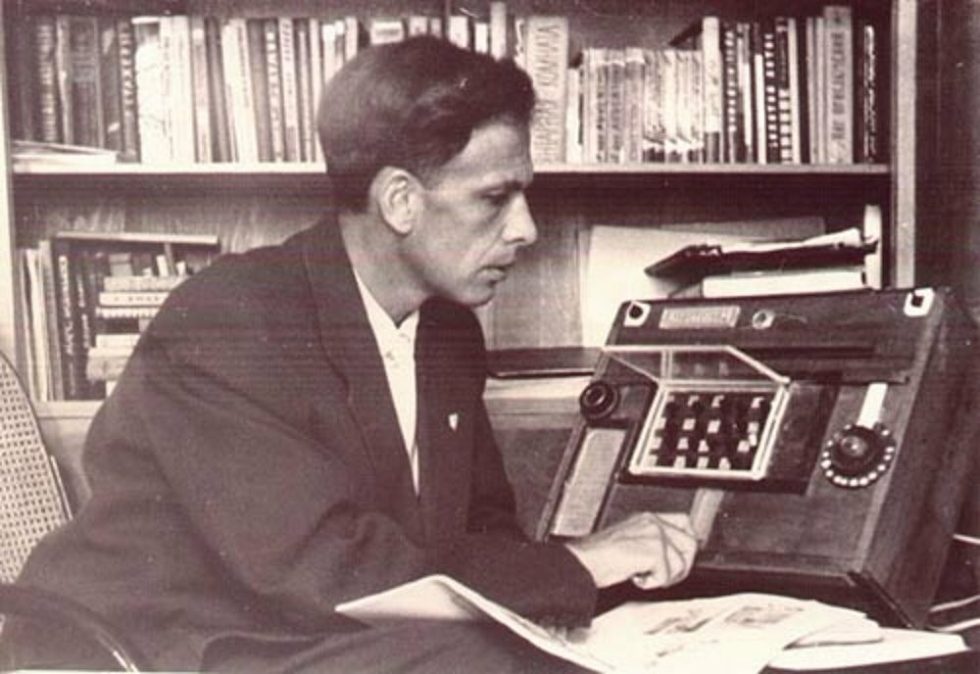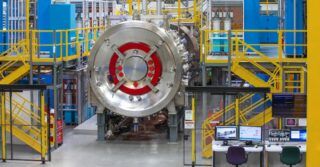Nowadays, when someone mentions in a conversation the word “innovation”, it can make some people want to end that discussion. Everyone and everywhere is talking about innovation. You get subsidies for innovations from European Funds. Innovations are being patented and brought to the market. You gain your profits on innovations. Almost everything is innovation today and almost everyone develops and implements innovations. Every improvement and every change in a product justifies calling it an innovation. It is understandable, therefore, to get tired of this cult of innovation and to be quite cautious about this slogan.
Nevertheless, it is true that the world is moving forward. We are more and more technologically advanced. Modern industrial solutions, telecommunications, electronics and even quantum solutions often amaze and surprise those who can understand them. All the others often simply accept their existence into their consciousness. Moreover, looking back a few years makes us very aware of how quickly this progress is taking place. Do you remember the memorable final of the Football World Cup, when Zinedine Zidane headbutt Marco Materazzi (effectively contributing to the defeat of the French against Italy). This match took place in 2006 – quite recently. Interestingly, no one in the world had recorded this memorable impact on their iPhone. Why? Mostly because the iPhone as such did not exist at that time. Its first generation went on sale only the following year. Today we have the opportunity to buy a device marked with the number 12 (I do not undertake to count which generation it is really, but more or less we are dealing with a new version each subsequent year).
As mankind, we have undoubtedly achieved a pace of progress that our world has never seen before. We are flooded with technological innovations. However, the question remains – where do these innovations come from and where is the boundary between a real innovation and the next “ordinary” evolution of this or that device? It would seem that in order to create a real innovation, one needs a genius who, in the moment of revelation, comes up with an absolutely brilliant and surprising idea (which of course becomes obvious to everyone around in the moment of its materialization). I am talking about an idea that can overturn an entire market branch, that can change consumers’ choices and drive entire families of other solutions out of the market.
Probably, in some cases, it was exactly like that, but I put forward the thesis that in most cases the emergence of such an innovation is the result of dozens of man-hours of analyzes, preparations, predictions that shows in which areas one should focus his activity in order to have a chance for a wide emergence. Then another hundreds, if not thousands, of man-hours of testing, experimenting and prototyping. Finally, also a large number of man-hours spent on placing the product on the market, promoting it and building awareness of the product among consumers.
In other words, it is good if someone comes up with a brilliant idea, but large corporations cannot afford to wait for a revelation and hope that it will be positively received by consumers. The largest world players simply have to create their innovations (more or less radical), and the creation process itself must significantly increase the probability of success of a given product on the market. I will come back to how the process of creating innovation is going, but now let’s look at the „Best Global Brands 2020” report prepared by Interbrand[1].
❗➡ This report lists the hundred most valuable brands (companies) operating in the world. The first quartile of this list includes such giants as Apple, Amazon, Google, Samsung, Toyota, Intel, IBM, Cisco and Ikea. These are undoubtedly corporations that introduce innovations to the market (such with a capital “I”) and make sure that these innovations live and function on the market long enough. It seems that in the case of these companies, this well-worn word is not an abuse at all.
However, let us stop for a moment to consider how these innovations can be measured (counted)? Is the new iPhone one innovation, or maybe a series of smaller ones, which are sewn somewhere deep inside the device and which the consumer cannot see directly on a daily basis (at most, he uses the effects of their operation)? There are probably several ways to create this type of statistics, but one seems extremely sensible. Since the company had used huge financial resources to create an innovation, it will protect it from competition as long as possible, so as to profit from it undisturbed. How to protect technological innovations? Of course by patenting them.
Let us therefore look at two examples of companies that patent their technological solutions. We will compare patent amount with the value of these brands estimated in subsequent editions of the Interbrand report.
❗➡ The below charts show two South Korean giants of the electronics industry (Samsung) and the automotive industry (Hyundai). Side by side, we compare the number of applications for patent protection filed by these companies (we only take into account applications submitted to the US Patent Office – we imposed such a limitation because patenting in the United States is expensive and means that the “most valuable” innovations are submitted for protection, i.e. those that bring highest return or strategically important) and brand value (expressed in billions of USD). At first glance one ca see a correlation between the number of patents filed and the increase in brand value. Moreover, in both cases, there is a clear acceleration in the number of patents filed and the increase in brand value correlating with this acceleration.

Figure 1. Comparison of the number of patents and brand value for Samsung and Hyundai / Source: Crido R&D own study based on Interbrands “Best Global Brands” reports and data from patent databases
In the case of Samsung the number of patents surged in 1997, then later calmed down a bit, only to fire again after a few years. In the case of Hyundai, the acceleration occurred a little later – in 2008. Therefore, we should ask ourselves another question – what happened in these years in the area of innovative activities of these companies? I will answer this question in the next three parts of this article.
Part 1: About how much can be deduced from patent reading
This story begins almost a century ago[2] – in 1926, that’s when Genrikh Altshuller was born. He spent almost all of his childhood and later scientific life in Baku (Azerbaijan). Various life vicissitudes and more or less fortunate coincidences saved him from real participation in the Second World War. Instead, he ended up in the Patent Department of the Caspian Navy in Baku. For a young man, who already showed a talent for inventions at school (he developed diving apparatus using hydrogen peroxide), it was the perfect place that allowed his talents to develop.
Altshuller focused on inventions and the process of creating them. His curiosity pushed him to analyze existing patents describing “technical systems” (this is how Altshuller called any system that man created in order for this system to perform a specific function). It was in those patents where he saw the basis of his later theory – he noticed that in many cases the technological solution described in the patent was designed to overcome the problem of the contradiction of parameters appearing in the original technical system (it is a simple principle when improving one parameter of this technical system, often leads to the deterioration of another parameter). Moreover, Altshuller noticed certain regularities and trends in the described solutions. They were so strong that they allowed him to create the first tools to stimulate inventiveness and, at the same time, the foundations of his own theory.
The first article (co-written with Raphael Shapiro) on Altshuller’s insights appeared in 1956 in “Questions of Psychology”[3]. In the article authors introduced few concepts such as: technical contradiction, ideality, inventive system thinking, the law of completeness of a technical system and inventive principles. They also proposed the first algorithm to support the process of solving inventive problems. In 1963, Altshuller introduced the first version of the Laws of Development of Technical Systems. A year later the first version of the contradiction matrix, later called the Altshuller Matrix, was created. This is how the classic TRIZ, the Theory of Solving Innovative Tasks, was born.
❗➡ The most popular tool created by Altshuller is the contradiction matrix (very often it is even equated with the entire classic TRIZ, which of course is an abuse). The matrix is a list of pairs of technical parameters describing a technical systems. There are 39 parameters (which gives a total number of pairs of 39 squared minus 39 from the diagonal, which is 1,482). Examples of parameters are “weight of a moving object”, “speed”, “shape”, “energy loss”, “accuracy of measurement”, “simplicity of production”.
I am giving just a few examples to make readers aware that not all of these parameters have a strict physical interpretation and a clearly defined unit of measurement. Fortunately, this is not what the contradiction matrix is about. The idea is to pair with each other the parameters that are improved along with the change introduced to the technical system, with parameters that deteriorate at the same time and for the same reason. In other words, it is important to see what, and not how much, is getting better and what is getting worse. Selecting a set of 39 parameters characterizing any technical system is a great achievement in itself (over time this set was supplemented[4], however, for most applications the basic 39 parameters are perfectly sufficient). But the real work of a genius was to analyze tens of thousands of patent solutions in which such contradictions have been resolved and extract from them the most typical ways of resolving these contradictions. Altshuller counted 40 of those typical solutions and called them the Inventive Principles. Then he entered the numbers of these principles in his matrix, thus indicating the directions in which inventors who encountered in their creative process with one or another contradiction should follow.
In the years that followed, Altshuller began to disseminate knowledge about his theory and its applications. This one gained recognition in more and more circles. Training camps were organized in which students, in isolation and over many weeks, deepened their knowledge of the classic TRIZ tools. An interesting fact is that in the 1960s Altshuller started working on what we would today call a simple computer. The device, which was called the Evrotron, was finally created in the 1970s as an automated contradiction matrix.

Figure 2. Genrikh Altshuller and Evrotron – the first invention machine / Source: https://avatars.mds.yandex.net/get-zen_doc/34175/pub_5d2cc96f4e057700ad303d84_5d2ce5a0f0d4f400afcbf8e1/scale_1200
In the 1970s, Altshuller’s path crossed that of Valery Tsurikov, another visionary who was one of the first in the world to see the potential of artificial intelligence and to develop this type of computer software in today’s Belarus (sic!). In 1974 both gentlemen saw the mutual synergy and understood the potential of the TRIZ methodology enriched with artificial intelligence. A year later Tsurikov created the first system prototype for the “invention machine”, and the invention machine itself (its working prototype) was created in 1988. Tsurikov’s team managed to automate the methods of generating new ideas based on TRIZ. They then developed a semantic processor that indexed the database of global patents and scientific articles, helping inventors find solutions in any technical field. The story of the inventive machine has of course its continuation, and the path to success in the US market is particularly interesting (Tsurikov left for the US in 1991). However, this is a story for another occasion.
Let us return for a moment to the trainings organized by Altshuller. In the 1980s, one of his students was Sergei Ikovenko – today a professor at the Massachusetts Institute of Technology and Tufts University, who keeps training successive generations of TRIZ practitioners. There is a reason why I am quoting the name of Professor Ikovenko. It is also thanks to him that TRIZ popularized overseas and began to evolve there towards a more modern set of tools, better suited to the capitalist economy. It happened, among others because the path of Professor Ikovenko also crossed with Tsurikov, who invited him to work in the “Invention Machine Corporation” company he founded, specifically to the department that dealt with training.
❗➡ One of the first projects that was implemented by “Invention Machine Corporation” with use of TRIZ methods was a project carried out in Finland. There were a problem of collecting dry peat from the numerous swamps that occurred there (peat briquette is an excellent fuel). The most common method was to simply push the top layer of peat by a bulldozer equipped with a ploughshare. The method was simple, relatively cheap, but very inaccurate – the terrain unevenness meant that some of the dry peat remained uncollected, and on the other hand, wet, muddy peat was also put on the heap (which significantly reduced the quality of the raw material). Another method was also tested during the project – the easiest way to illustrate it is simply calling it a huge vacuum cleaner. A huge nozzle sucked the top layer of peat, leaving what was wet on the ground. The method was precise, but extremely expensive in terms of operation cost.
❗➡ The development team used one of the TRIZ tools (today called “feature transfer”, but then it was “development of alternative technical systems by combining them into a supersystem”). The developed concept of the solution assumed the use of a ploughshare additionally equipped with air nozzles, which significantly increased the precision of peat collection without contaminating it with wet material and without significantly increasing the costs of the process. So we dealt with a combination of the positive features and functions of both systems and the rejection of their negative aspects. We will return to Sergei Ikovenko and his work again, looking at other examples of the use of modern TRIZ.
For now, however, as I approach the end of this section, I would like to summarize briefly. First of all, I promised to return to the charts showing the number of patents filed in US Patent Office and brand value for Samsung and Hyundai respectively. As you can easily guess, this point in time when both companies began to accelerate rapidly is the moment of implementing the TRIZ methodology within their structures. Both companies, independently of each other, noticed the potential hidden in these tools and decided to completely change the internal paradigm of thinking about the research and development process. In both cases, the key person in the process of teaching and implementing TRIZ was the already mentioned Sergei Ikovenko, who conducted trainings in both companies. As can be seen in the charts, the decision to implement a more algorithmic approach to development activities has paid off for both companies.
Concluding this part, I would like to emphasize that TRIZ, as a methodology of operation is also a bit like an innovative technical system. As with many other brilliant discoveries, in order for them to materialize, it was enough to perceive quite obvious regularities. Nevertheless, it did require a certain genius from Genrikh Altshuler to actually do that. The first tools very quickly evolved into a complete theory and grew with a number of additional and complementary tools. Of course, one could probably argue about the value of the classic TRIZ (especially in the context of the place and time of its creation), if not for the fact that very quickly both people and the methodology itself emigrated to the USA and only there the real boom of TRIZ took place, clearly showing that it is an approach that defends itself perfectly.


![How do leaders create innovations in a systemic way? [PART 1] How do leaders create innovations in a systemic way? [PART 1]](https://industryinsider.eu/wp-content/uploads/xcrido-innowacje-980x512.jpg.pagespeed.ic.vDNF35iisp.jpg)





